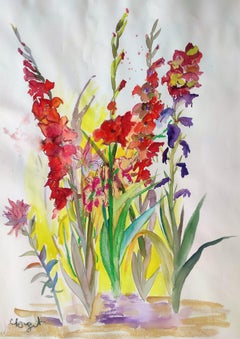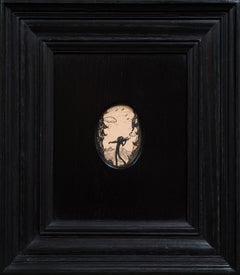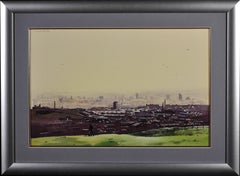Naturalistic Landscape Drawings and Watercolors
1910s Naturalistic Landscape Drawings and Watercolors
Laid Paper, Pencil, Pastel, Charcoal
21st Century and Contemporary Naturalistic Landscape Drawings and Watercolors
Pastel, Watercolor
1880s Naturalistic Landscape Drawings and Watercolors
Paper, Watercolor, Gouache, Pencil
1910s Naturalistic Landscape Drawings and Watercolors
Oak, Paper, Ink
Early 1900s Naturalistic Landscape Drawings and Watercolors
Watercolor, Laid Paper
Late 20th Century Naturalistic Landscape Drawings and Watercolors
Watercolor
2010s Naturalistic Landscape Drawings and Watercolors
Paper, Pastel
2010s Naturalistic Landscape Drawings and Watercolors
Paper, Pastel
2010s Naturalistic Landscape Drawings and Watercolors
Pastel, Paper
2010s Naturalistic Landscape Drawings and Watercolors
Paper, Pastel
2010s Naturalistic Landscape Drawings and Watercolors
Paper, Pastel
2010s Naturalistic Landscape Drawings and Watercolors
Paper, Pastel
2010s Naturalistic Landscape Drawings and Watercolors
Paper, Pastel
2010s Naturalistic Landscape Drawings and Watercolors
Paper, Pastel
2010s Naturalistic Landscape Drawings and Watercolors
Paper, Pastel
2010s Naturalistic Landscape Drawings and Watercolors
Paper, Pastel
2010s Naturalistic Landscape Drawings and Watercolors
Paper, Pastel
21st Century and Contemporary Naturalistic Landscape Drawings and Watercolors
Oil
21st Century and Contemporary Naturalistic Landscape Drawings and Watercolors
Charcoal, Paper
21st Century and Contemporary Naturalistic Landscape Drawings and Watercolors
Oil
21st Century and Contemporary Naturalistic Landscape Drawings and Watercolors
Paper, Charcoal
21st Century and Contemporary Naturalistic Landscape Drawings and Watercolors
Paper, Charcoal
Early 1900s Naturalistic Landscape Drawings and Watercolors
Watercolor
1880s Naturalistic Landscape Drawings and Watercolors
Watercolor
1880s Naturalistic Landscape Drawings and Watercolors
Watercolor
1920s Naturalistic Landscape Drawings and Watercolors
Watercolor, Board, Pencil
20th Century Naturalistic Landscape Drawings and Watercolors
Watercolor, Handmade Paper
1930s Naturalistic Landscape Drawings and Watercolors
Archival Ink, Watercolor, Illustration Board
1930s Naturalistic Landscape Drawings and Watercolors
Archival Ink, Watercolor, Illustration Board
1890s Naturalistic Landscape Drawings and Watercolors
Watercolor
1820s Naturalistic Landscape Drawings and Watercolors
Watercolor
1890s Naturalistic Landscape Drawings and Watercolors
Paper, Watercolor
1860s Naturalistic Landscape Drawings and Watercolors
Paper, India Ink
2010s Naturalistic Landscape Drawings and Watercolors
Photogram, Other Medium, Photographic Film, Emulsion, Watercolor, Archiv...
Early 1900s Naturalistic Landscape Drawings and Watercolors
Paper, Watercolor
2010s Naturalistic Landscape Drawings and Watercolors
Photographic Film, Photogram, Emulsion, Ink, Watercolor, C Print, Color,...
1910s Naturalistic Landscape Drawings and Watercolors
India Ink, Paper, Watercolor
1930s Naturalistic Landscape Drawings and Watercolors
Paper, Watercolor
1880s Naturalistic Landscape Drawings and Watercolors
Graphite
1880s Naturalistic Landscape Drawings and Watercolors
Paper, Chalk, Pencil
2010s Naturalistic Landscape Drawings and Watercolors
Photographic Film, Other Medium, Emulsion, Watercolor, Archival Paper, P...
Mid-20th Century Naturalistic Landscape Drawings and Watercolors
Paper, Ink, Watercolor
20th Century Naturalistic Landscape Drawings and Watercolors
Watercolor
1880s Naturalistic Landscape Drawings and Watercolors
Paper, Pencil
2010s Naturalistic Landscape Drawings and Watercolors
Photographic Film, Other Medium, Emulsion, Watercolor, Archival Paper, P...
Early 1900s Naturalistic Landscape Drawings and Watercolors
Watercolor
Late 19th Century Naturalistic Landscape Drawings and Watercolors
Paper, Watercolor
Early 1900s Naturalistic Landscape Drawings and Watercolors
Pencil, Charcoal
2010s Naturalistic Landscape Drawings and Watercolors
Emulsion, Photogram, Photographic Film, Watercolor, C Print, Color, Lith...
19th Century Naturalistic Landscape Drawings and Watercolors
Watercolor
19th Century Naturalistic Landscape Drawings and Watercolors
Watercolor
21st Century and Contemporary Naturalistic Landscape Drawings and Watercolors
Watercolor, Pencil, Paper
1940s Naturalistic Landscape Drawings and Watercolors
Watercolor, Paper
21st Century and Contemporary Naturalistic Landscape Drawings and Watercolors
Paper, Watercolor, Pencil
1940s Naturalistic Landscape Drawings and Watercolors
Watercolor
21st Century and Contemporary Naturalistic Landscape Drawings and Watercolors
Paper, Watercolor, Pencil
21st Century and Contemporary Naturalistic Landscape Drawings and Watercolors
Paper, Watercolor, Pencil
21st Century and Contemporary Naturalistic Landscape Drawings and Watercolors
Paper, Watercolor, Pencil




